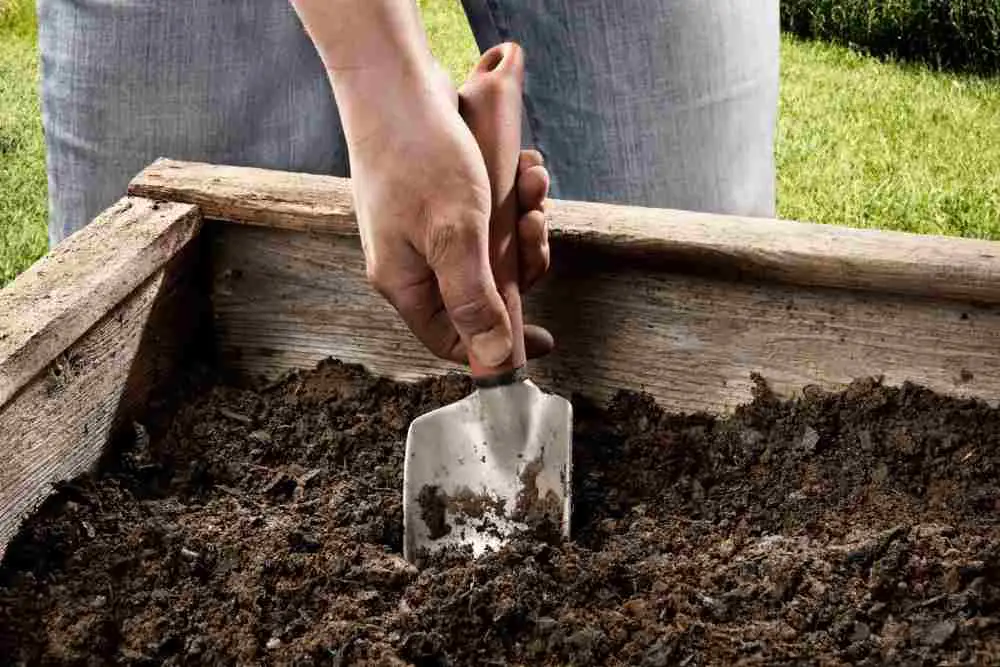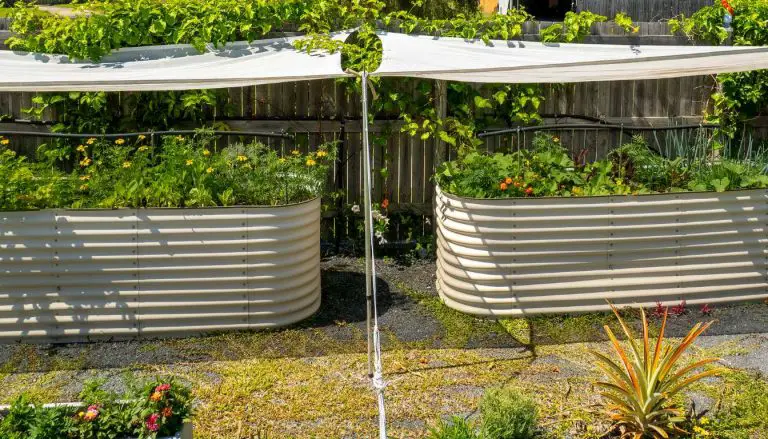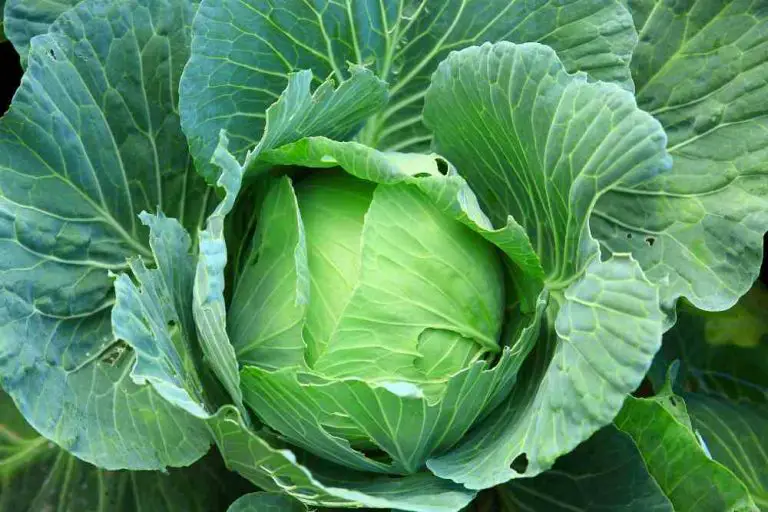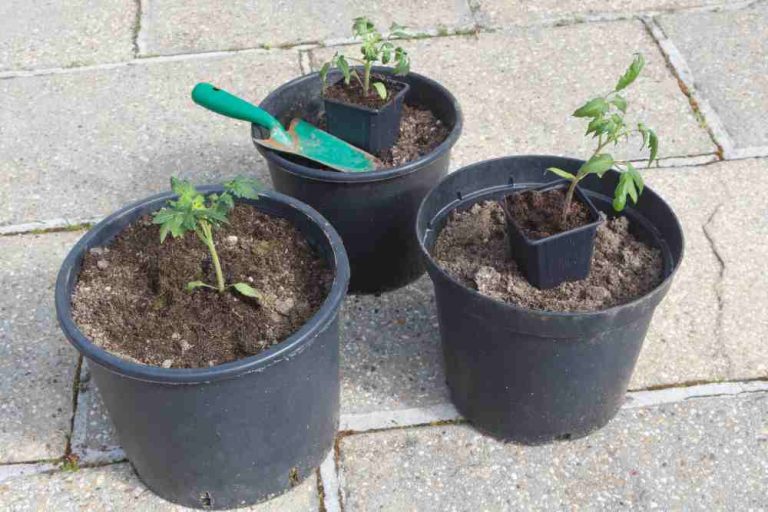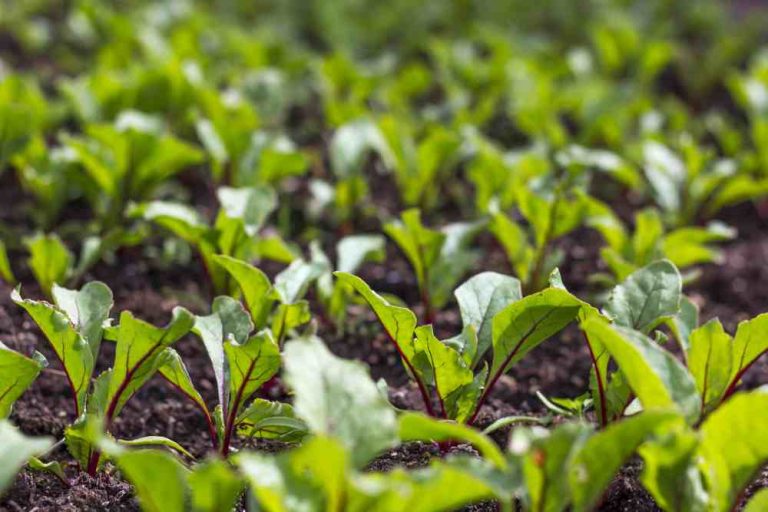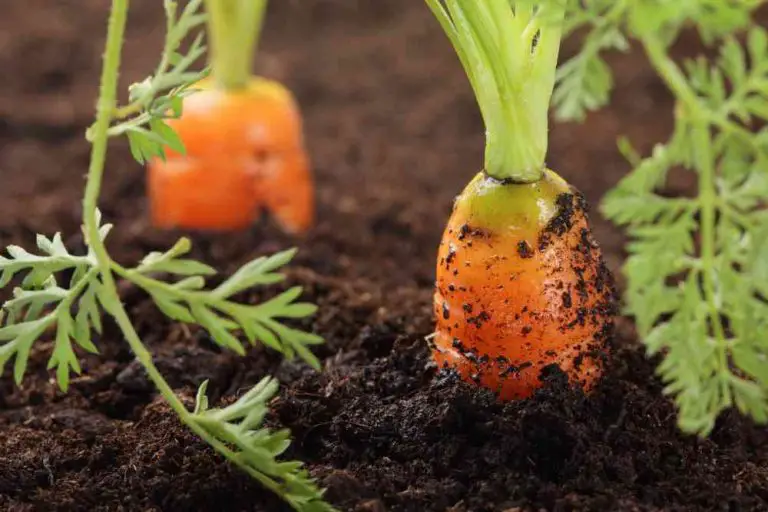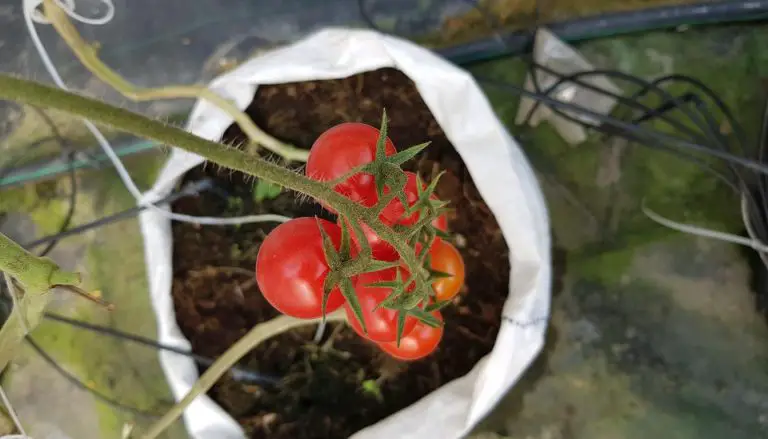Best Soil for Raised Bed Gardening: Ultimate Guide
Raised beds are garden beds that stand above ground level. “Raised” describes a bed of soil where the soil level is higher than the surrounding soil. The term “bed” denotes a size small enough to work in without actually walking onto the planting area. To provide structural support and prevent erosion, raised beds are usually surrounded by box-like frames.
Brick, rot-resistant wood, landscaping timbers, and metal or concrete blocks are just a few examples of materials that are used to make raised bed frames. Gardeners who don’t want to bend over while working on the ground can also elevate their beds.
When selecting soil for raised bed gardening, it’s important to consider factors such as drainage, nutrient content, and texture to create an optimal environment for plants.
However, when producing your own fruits, veggies, and herbs, soil is one of the most important factors to get properly. The raised bed and trellis provide your garden with a sturdy foundation, but the soil along with water and sunlight is what will give it life.
If you go to the trouble of constructing a raised-bed kitchen garden but then skimp on the soil, you might as well garden in the ground. Fill your raised bed with the best soil possible so that you don’t end up standing there at the end of a growing season with a hose, wet ground, and nothing to show for it.
Have you ever wondered what kind of soil to use in raised garden beds? In contrast to other raised garden bed ideas (such as plant selection), the soil you choose may not seem to be as significant, but it actually has a significant impact on your overall garden. Therefore, it is a good idea to put soil at the top of your priority list while figuring out how to design a raised garden bed. But what kind of soil for raised bed gardening you must use? Here are some all-natural remedies that professionals use in their gardens.
Difference Between Raised Bed Soil And Your Garden Soil?
Knowing the difference between garden soil and raised bed soil is crucial for effective gardening. Ignoring this distinction may result in inferior plants or production. The quantity of moisture and heat required to break down organic compounds in these two soils differs significantly. Another factor you must consider is the amount of humus present.
This is the black organic material found in soils as a result of plant or animal decomposition. Additionally, the ability of the soil to support the growth of plants and vegetables increases with the amount of humus present. Raised beds are not the best use for garden soil, even though it breaks down organic matter more quickly and produces more humus.

There is not much space for roots to develop in garden soil because the particles are too tiny, which causes them to over-compact and become excessively moist. Garden soil is corrosive because it has a high salt concentration due to its high moisture level. Because of this, even if the garden soil is rich in nutrients, you shouldn’t use it to grow vegetables and other plants on a raised bed. Discover the ideal formula for raised bed soil composition by reading on.
Garden soil is a type of soil that includes topsoil and forestry materials, or essentially wood, in addition to other ingredients. It is not intended for raised beds or containers since it tends to get overly compacted and very wet, leaving inadequate space for roots to spread out. It is thicker in texture and retains more water than potting soil.
To be clear, potting soil, which is often referred to as potting mix, is not actual soil. It is a synthetic material manufactured from natural elements, including perlite, minerals, decaying wood, and peat moss. It is perfect for growing plants in little pots or containers. The fundamental difference between garden soil and potting soil is the inclusion of topsoil, which makes garden soil heavier.
Garden soil is also less expensive than potting mix because it lacks components like perlite and peat. Garden soil can have a relatively high volume of salts because of the high moisture content, which makes it very corrosive. If soil is left in a covered driveway for a lengthy period of time, the driveway may be damaged. To guarantee soil durability, dig a shallow hole approximately 6 inches deep and then scatter the soil in it on your vegetable bed.
This will enable the salts to properly penetrate into the soil. For in-ground planting, garden soil is appropriate since it has several advantages, such as lowering native soil compaction and enhancing soil composition. Essential nutrients in garden soil can help native soils retain nutrients and encourage the development of stronger root systems. When native soil is mixed with compost-rich garden soil, the quality and structure of the soil will be increased.
How Much Soil Will You Need?
Compost makes the most of the available space and ensuring veggies and plants have the room they need to thrive will depend on how much soil you use for your raised beds. It will also save you money and time if you are aware of just how much you require.
You simply need to take three measurements to determine how much soil you’ll need for a raised bed that is rectangular:
- Width (W)
- Length (L)
- Depth of soil required (D)
The following formula is used to determine the soil’s volume (V): V = L W D. You’re raised bed’s dimensions should be measured first: height, width, and length. It doesn’t matter whether the dimensions are obtained from the inside or outside as long as the wooden boards you utilize to build your bed aren’t excessively thick. It is advisable to take the measures in meters because most topsoil and compost are supplied in metric volumes, either in liters or cubic meters (m3).
Raised Bed Soil Mix
The ideal raised bed soil mix, which is commonly accepted, consists of topsoil, organic matter, compost, and materials for improving drainage.
1. Top Soil
Your raised bed soil mix should primarily consist of premium-grade topsoil, accounting for about 50% of the total. Although this loamy grade is typically not inexpensive, it has a solid structure, is fertile, and shouldn’t have any weeds. If your beds are big and you need a lot of topsoils, it might be worthwhile to purchase them in large quantities from a specialized supplier.
Smaller raised beds can be filled with topsoil bags obtained from home improvement stores or garden centers. If at all feasible, you should inspect the soil before purchasing to make sure it is free of any impurities, like glass or bricks, fibrous roots, weeds, or even stones.
2. Materials For Improving Drainage
Drainage won’t be an issue if your raised bed is positioned on an existing grass or land area. However, you need to add material to the foundation, such as stones, rubble, or broken pebbles, to assist drainage if it rests on pavement or concrete.
Sand that is quite sharp could also be added. Although it will drain easily, this clean, gritted sand will retain some water to support plants. Garden centers typically sell sharp sand, but be careful not to confuse it with builders’ sharp sand, which is an entirely different product.
2. Organic Matter
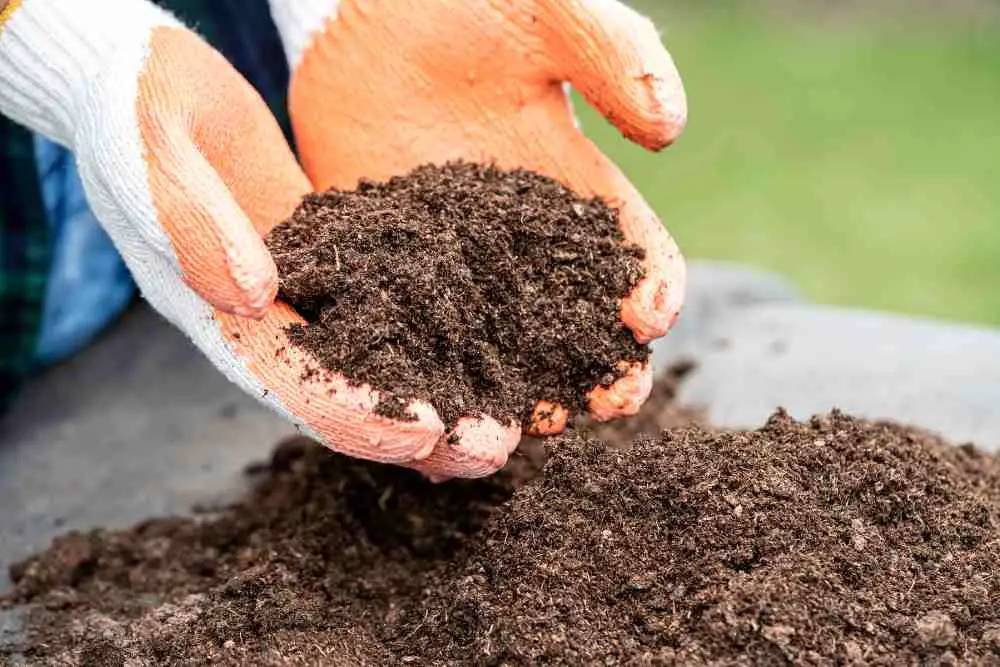
Your raised bed soil will become less compact and more workable by adding 20% organic matter. Additionally, it will strengthen the soil’s structure by creating more super tiny-tiny pockets in the ground to hold water and air, promoting root growth and enhancing plant health. There are many different organic mediums available, such as leaf mold, composted wood, and bark chips.
– Vermicompost (Worm Castings)
Consider purchasing this in bulk or in bags if you can. While it is not widely available or inexpensive, it is worthwhile. The good news is that a small amount can do a lot. You won’t need a lot to have a significant impact.
Worm castings contain much more of the essential nutrients that your plants require to grow. Compared to typical topsoil, worm castings really include seven times as much phosphate, five times as much nitrogen, and ten times as much potassium. Castings still offer another level of complexity to the general soil composition.
– Leaves
One of the preferred ingredients is well-aged, shredded leaves. They add a lot of bulk. What is it mean by well-aged? first, you have to shred the leaves, then wet them thoroughly, and they rot in six months to a year, ready to be absorbed. Ask around if you don’t have access to lots of leaves. Your neighbors and friends will be pleased to share their supplies.
– Ground Bark
There are several types of ground bark accessible, but pine is the most widely distributed. Although pine bark has a mildly acidic flavor, it doesn’t have a significant impact on the pH of your plant soil.
For this application, make sure to use aged bark. In the early stages of decomposition, freshly chipped wood will harm rather than help your soil. A useful source of carbon is ground bark.
It will decompose over time, and because of its gritty texture, your garden beds can flow water and oxygen more easily. Most of the other substances we’ve listed here, including topsoil and compost, have textures that are comparable. The variety of particle sizes that ground bark delivers can significantly improve the health of your plants.
– Mushroom Compost
This soft, dark-brown organic substance isn’t comprised of mushrooms. It is a byproduct of the ingredients used to cultivate the mushrooms, which are the leftovers after the mushrooms have been harvested. In addition to hay, gypsum, maize cobs, cottonseed hulls, and other organic materials, mushrooms are also produced in these combinations.
However, when that material is composted, packaged, and marketed as mushroom compost, it is light and crumbly. It has a small amount of phosphorus, about 3% nitrogen, and potassium, as well as other minerals like magnesium and calcium. Its pH (6.5-7.0) is neutral; thus, it won’t affect the pH of your soil.
3. Compost
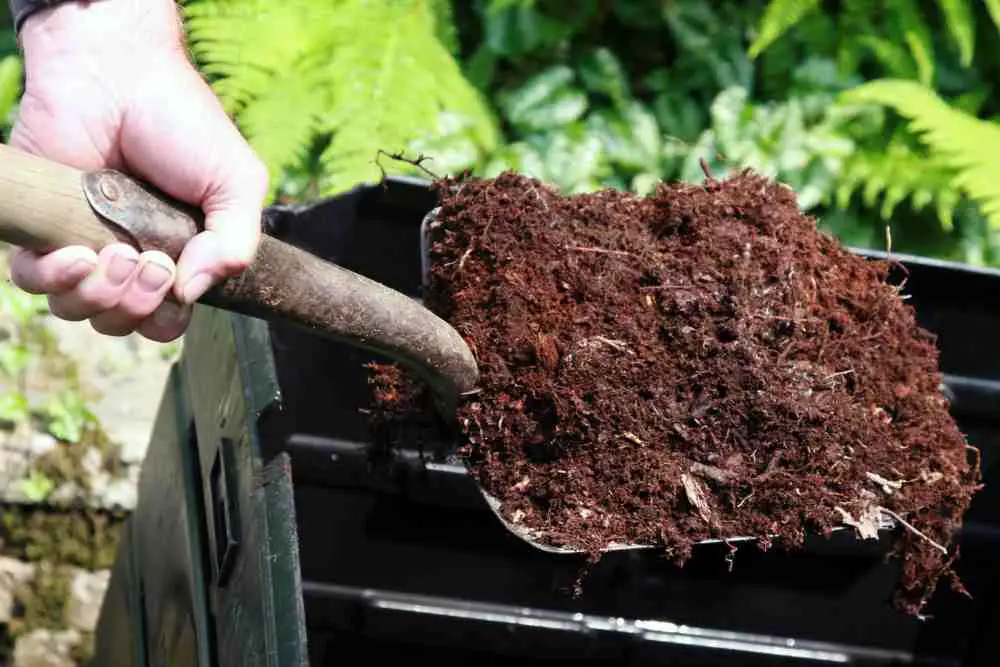
Any soil mixture for raised beds must include compost as a key component. It will retain moisture and give your plants and veggies essential nutrients. In your raised bed mix, it should therefore account for about 30%. You can find a variety of composts at your neighborhood garden center if you don’t already have one or just don’t have enough of your own.
There are many different kinds, but we’d suggest choosing a compost that doesn’t contain peat. Peat-based products have a negative influence on the environment because it is predominantly sourced from increasingly uncommon lowland bogs.
The most effective method for getting the highest-quality compost is to start a heap in your garden. You can choose exactly whatever organic items you wish to use to feed the compost pile if you make the compost yourself.
You may be certain that it is entirely organic and pure in this way. And it’s essentially free! Black gold may be made from tons of household trash. Kitchen and yard waste can be converted into finished compost using the quick composting method in as little as 14 to 21 days.
Composting bins with multiple bays are the best for producing a lot of compost quickly. You’ll need a lot of green and brown resources to keep it fed and running. Even so, the garden never seems to have enough compost to cover it all. It’s acceptable to add compost from other sources in addition to what you already have.
- 20+ Chic Boho Bedroom Ideas for a Cozy and Stylish Retreat - June 20, 2024
- 12+ Modern Boho Living Room Ideas to Create a Unique Oasis - June 10, 2024
- 10 Stunning Canopy Bed Ideas for a Dreamy Escape - May 16, 2024

